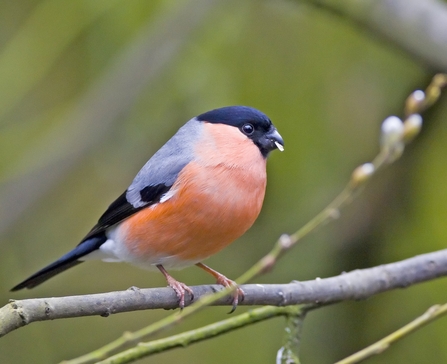It’s good to see that last week the football hasn’t kept too many of you from getting out and about to see loads of the wonderful wildlife to be found in Derbyshire. But it's not just fauna that you’ve been recording but some of our fabulous flora too including a few of the fifty or so species of orchid we have in the UK. The species you’ve found across Derbyshire include the Bee Orchid, which mimics a female bee to lure in males, and our most common orchid, the Common-Spotted Orchid, which can be found in a variety of habitats from woodland to old quarries. A few weeks ago a South Marsh Orchid was also seen in central Derbyshire, which despite its name can be found it drier meadows as well as marshes and fens. Other plants spotted include wild strawberry plants in southern Derbyshire and to the north Yellow-Wort whose flowers are close during the afternoon, Viper’s-bugloss, named after its resemblance to a viper, and Selfheal, a low growing herb with violet flowers. For more information on how you see our orchids and other wildflowers visit the links at the end of the blog.
Fourth Week of June 2021 Sightings
Orchids at Chee Dale, Julia Gow
With all these flowers around its not surprising that you’ve also seen a number of pollinators. In central Derbyshire, including at our Hopton Quarry and Gang Mine reserves, your sightings include some of our 270 species of bee, our smallest brown butterfly, the Small Heath, the Mother Shipton moth named after a 16th century witch and maybe one of our most beautiful insects, the Ruby-Tailed Wasp.
Staying in the skies Red Kites, which were common in Shakespearean London and would pinch hung out washing for building their nests, have been spotted near Cromford and near by around Matlock Curlews, who’s wingspan can reach 90cm, were also seen. Between Chesterfield and Sheffield the distinctively plump, red-breasted and thick-billed Bullfinch, the colourful cousin in the crow family, the Jay, and the only bird in the UK to climb tree trunks headfirst, the Nuthatch were spotted too.

Bullfinch, Damian Waters
Back down on earth you spotted an array of non-flying species in and around Derby including a Common Lizard, which is unusual among reptiles as the females give birth to live young after incubating her eggs inside herself. The UK’s largest land predator, a European Badger sporting an unusual brown and white coat was seen too along with one of their smaller cousins who can kill prey larger than themselves, the Stoat. Another small predator but who has a taste for invertebrates, amphibians and anything else they can catch, the European Hedgehog, was also spotted.
As we move into July we are looking forward to hearing about more of the fabulous wildlife and plants you’ve spotted across Derbyshire. To submit your own sighting and be featured in a future blog go to https://www.derbyshirewildlifetrust.org.uk/wildlife/record-sighting.
Where to find orchids: https://www.wildlifetrusts.org/where_to_see_orchids
Where to find wildflower meadows: https://www.wildlifetrusts.org/where_to_see_wildflower_meadow
Thank you to Anne Clark, Colin Mill, Jean Bennett, Carol Phillips, Anthea, Peter Keen, Nicola Rudge, Keith Foster, Bernard Dumbleton, Mark & Julie Howarth, Geoffrey Fisher, Ken West, Simon Hampton, Sheila Curzon, Fiona Statham and Liz Fox for recording their sightings.
